HORSEKEEPING  SKILLS LIBRARY
SKILLS LIBRARY
Stablekeeping
A VISUAL GUIDE TO SAFE AND HEALTHY HORSEKEEPING

CHERRY HILL
PHOTOGRAPHY BY
RICHARD KLIMESH

The mission of Storey Publishing is to serve our customers by
publishing practical information that encourages
personal independence in harmony with the environment.
Edited by Deborah Burns and Marie Salter
Cover design by Cynthia McFarland, based on a design by Joseph R. Williams
Cover photography by Cherry Hill
Text design and production by Susan Bernier
Production assistance by Jennifer Jepson Smith
Interior photography and author photo by Richard Klimesh
Illustrations on pages by
Alison Kolesar; all others by Richard Klimesh
Indexed by Susan Olason/Indexes & Knowledge Maps
2000 by Cherry Hill
All rights reserved. No part of this book may be reproduced without written permission from the publisher, except by a reviewer who may quote brief passages or reproduce illustrations in a review with appropriate credits; nor may any part of this book be reproduced, stored in a retrieval system, or transmitted in any form or by any means electronic, mechanical, photocopying, recording, or other without written permission from the publisher.
The information in this book is true and complete to the best of our knowledge. All recommendations are made without guarantee on the part of the author or Storey Publishing. The author and publisher disclaim any liability in connection with the use of this information. For additional information please contact Storey Publishing, 210 MASS MoCA Way, North Adams, MA 01247.
Storey books are available for special premium and promotional uses and for customized editions. For further information, please call 1-800-793-9396.
Printed in the United States by Versa Press
20 19 18 17 16 15 14 13 12 11
Library of Congress Cataloging-in-Publication Data
Hill, Cherry, 1947
Stablekeeping : a visual guide to safe and healthy horsekeeping/Cherry Hill.
p. cm.
Includes index.
ISBN 978-1-58017-175-5
1. StablesManagement. 2. Horses. I. Title.
SF285.35 .H56 2000
636.083 21dc21
99-045164
Contents
Preface
Stablekeeping is the coordination of day-to-day tasks involved in keeping a barn running smoothly. Whether youre caring for one horse or fifty, whether you have your own barn or are working in someones stable, the ideas in this book can help improve the safety, efficiency, and atmosphere of your stable environment. Ultimately, good stablekeeping will minimize repair, feed, and veterinary bills and provide a safe and healthy living environment for horses as well as a pleasant workplace for the horses people.
When it came time for me to choose the equine cover girl for this book, it was an easy choice. Sassy Eclipse, a 25-years-young Quarter Horse mare, is often mistaken even by experienced horsemen to be half that age! But here she is after more than 20 years of riding and six foals, looking just as bright and sassy as the day I bought her as a yearling. Since she was born, Sassy has had the good care that is outlined in this and my other horsekeeping skills books. By paying special attention to parasite control, sanitation, proper nutrition, and safety, Sassy and I plan to enjoy many more years together.
Acknowledgments
This stablekeeping book would not be complete without introducing my longtime husband and horsekeeping partner, Richard Klimesh. Not only is he a master at designing, building, and maintaining healthy and safe horse facilities, but he is my able partner in the day-to-day chores of caring for our horses. Our teamwork is energizing. Together we choreograph our daily chore routines and special tasks such as unloading hay and spreading manure. The hours are long and the work is sometimes hard and dirty, but it gives us a great deal of satisfaction and joy to pause in our quiet barn and just listen to the horses munching their hay.
Thanks to the following for help with the photos for this book:
Mrs. Putnum Davis, Staatsburg, New York
Farnam Companies, Inc., Phoenix, Arizona
Hamilton Products, Ocala, Florida
Horseware Triple Crown Blanket, Kinston, North Carolina
Ron Johnson, Johnson Barns and Trailers, Phoenix, Arizona
Detlef Juerss, Steinbau Construction, Pleasant Valley, New York
Kalglo Electronics Co., Inc., Bethlehem, Pennsylvania
Loveland Industries, Greeley, Colorado
Spalding Laboratories Biological Fly Control, Arroyo Grande, California
Wilsun Equestrian, Alpharetta, Georgia
1
BARN FEATURES
The atmosphere and safety of all activities within a barn are determined by three main barn features: the brightness and placement of lights, the amount of fresh air, and the material and condition of the aisle floor. These features can make the difference between a place you have to go to do chores, and a place you want to go to spend time with your horses. The image of a person stumbling over a wavy dirt floor in a dimly lit stable while breathing foul air might be suited to a Dickens novel, but this is not the stuff of good stablekeeping. No matter what size or shape a stable is, or whether its old or new, the environment can often be improved by adding or moving lights, installing windows and vents, and remodeling floors.
Lighting
General, or ambient, lighting lets you see everything in the stable and enables you to move around safely without falling over things. Natural lighting can be supplied by a combination of overhead lights, skylights, windows, translucent wall panels, and open doors. Light-colored walls and ceilings reflect light and make the most of ambient light.
All lightbulbs in a stable should be protected from dust and impact. Dust on the surface of a bulb reduces light output and can be a fire hazard. Lightbulbs break easily upon impact and can cause injury from shards of glass and fire from the hot filament.
Standard incandescent lightbulbs are cheap to buy and easy to replace, but when compared to fluorescent and halogen lights, they are inefficient and burn out quickly. An incandescent bulbs limited light output is further restricted by the thick glass cover and metal grille needed to protect it. Halogen lights are very bright and usually come encased in sturdy, compact, dustproof fixtures that are easy to install. Fluorescent bulbs are relatively cool, give off more than twice the light of an incandescent, and are cheap to operate, but the most common fixtures are 4 feet (1.2 m) long, which means they take up a lot of space and catch a lot of dust in a barn environment. Fluorescent bulbs should be protected from dust, moisture, and impact by a transparent plastic cover.
Task lighting, or work lighting, is for small areas where you need to see what youre doing without shadows and glare. In the feed room, for example, you need to weigh grain, read labels, and measure feed and supplements accurately. The amount of light you need depends on the task, the room, and the location of the light. In some feed rooms a single 100-watt incandescent bulb might be enough, while others might require several bulbs in different locations. Locate task lighting so it doesnt glare in your eyes as you do your work. Also, install plenty of plug-in outlets throughout the stable, for using temporary lights where theyre needed, such as for the veterinarian or farrier.
Next page

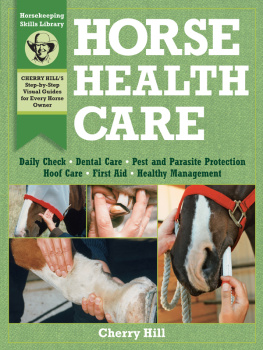
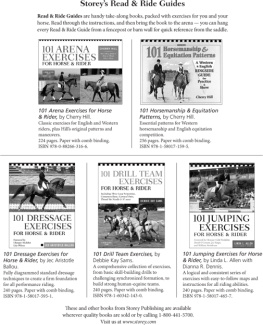
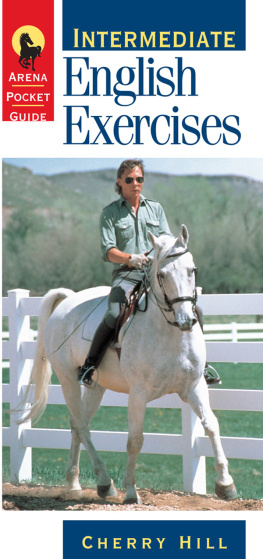
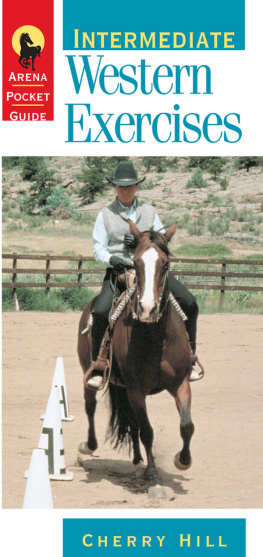
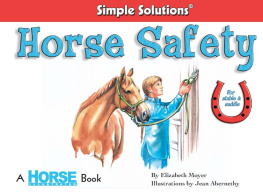
 SKILLS LIBRARY
SKILLS LIBRARY
